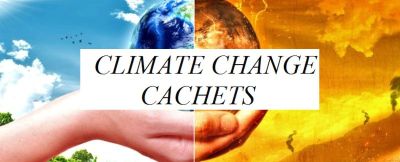The Virginia-based Conservation International organization says climate change is making life harder for bees.
It says global warming is causing habitat loss as bees fail to migrate to cooler areas and establish new hives. A recent study on bumblebee migrations found that bee territories have shrunk by nearly 200 miles in North America and Europe.
As average monthly temperatures rise, flowers bloom earlier, creating a potential mismatch in seasonal timing between when flowers produce pollen and when bees are ready to feed. Even a small mismatch of three to six days could negatively affect bees’ health, making them less likely to reproduce and less resistant to predators and parasites.
Honeybees are susceptible to parasites such as Varroa mites and the gut parasite Nosema ceranae, and environmental stresses may increase infections.
A recent study found that lower temperatures were associated with lower prevalence of the Nosema, indicating that higher temperatures as a result of climate change could result in more bees infected with Nosema.
***
Lewis Ziska, a U.S. Department of Agriculture plant physiologist and one of the nation’s leading climate change scientists, is quitting over the Trump administration’s efforts to bury his groundbreaking study about how rice loses nutrients due to rising carbon dioxide in the atmosphere.
Ziska, told the Politico website he was alarmed when department officials not only questioned the findings of the study –that raised concerns for the 600 million people who depend on rice for most of their calories – but also tried to minimize press coverage of the paper, published in the journal Science Advances.
Politico says his departure follows several other government officials resigning from their posts over accusations that the administration is censoring climate science.
Ziska tells Politico the USDA is in constant fear of President Donald Trump and Secretary Sonny Perdue’s open skepticism about broadly accepted climate science. Researchers, he says, go to extremes to obscure their work to avoid political blowback. The result, he says, is a vastly diminished ability for taxpayer-funded scientists to provide farmers and policymakers with important information about complex threats to the global food supply.
Ziska is concerned the politicization of climate science poses a threat to the future of agriculture in the U.S. and abroad.
“You have farmers who are looking at climate and weather that they’ve not seen in their lifetimes,” he says. “It’s not your father’s climate. It’s changing.”
***
Temperatures across 98% of Earth’s surface were hotter at the end of the 20th century than at any time in the previous 2,000 years.
Scientists say such nearly universal warming is unique to the current era.
By contrast, other well-known cold and warm snaps of the past, such as the Little Ice Age or the Medieval Warm Period, were regional rather than worldwide.
The rate at which temperatures are increasing now far exceeds any previous temperature fluctuations in the last two millennia.
Those are the conclusions of a trio of papers examining temperature trends over the last 2,000 years, published in Nature and Nature Geoscience. Previous climate fluctuations were primarily driven by natural causes, including volcanic eruptions, rather than human-caused greenhouse gas emissions.
***
Prof. Steve Trewick, a specialist in evolutionary ecology and genetics at New Zealand’s Massey University, says to really tackle climate change people will collectively have adopt a mindset to live as if there’s wartime rationing.
“It’s terrible to use that war analogy because that’s very negative, but in a way, we are at war with ourselves,” he says in a blog. “As a species we are over-using our resources and those resources are definitely limited.
“Technology is not going to magic away that problem. The fact is, we’re using too much of a limited resource so we have to change.”
If more people recognize and start to accept the reality of the situation the planet is in and were prepared to make tiny changes, they would be that much more receptive to the bigger changes that will came along.
***
Extreme climate events are worsening the impact of climate change in Australian marine ecosystems causing, in some cases, irreversible change.
Researchers at the Commonwealth Scientific and Industrial Research Organization collated work by climate impact researchers around the coast to reveal that 45% of coastal marine ecosystems have suffered from climate extremes.
“The length of coast impacted by extreme climate events in the last decade is more than 8,000 km (5,000 miles),” study lead author Russ Babcock says.
“Corals, kelp, mangrove and seagrass ecosystems provide important habitat and food for thousands of biodiverse marine creatures, “ he says. “We’ve already seen major climate events rock these marine food webs and create changes that will take decades to fully recover from. Some of them are potentially irreversible.”
“Adaptation responses will be required at species and ecosystem scales,” Babcock says. “But in the long-term adaptation efforts will need to be coupled with efforts to reduce atmospheric greenhouse gases that drive climate change.”
***
Forest landowners on the American West Coast are expected to adapt to climate change by gradually switching from Douglas fir to other types of trees such as hardwoods and ponderosa pine.
An Oregon State University study says analyses of forests and climate find evidence that Douglas-fir will be less productive in the Pacific Northwest under a warming climate/
David Lewis of the College of Agricultural Sciences says about half of all non-federal forestland harvested in Oregon and Washington now is replanted with Douglas fir.
He says Douglas fir’s ability to sequester carbon will diminish and landowners are likely to switch to other trees.
Modeling suggests Douglas-fir planting will shrink to 25% by the end of the century.
“Our model shows a change in the forest landscapes will generate habitat losses for wildlife specialized to Douglas fir and habitat gains for wildlife specialized to other forest types,” Lewis says.
***
The University of Maryland’s Center for Environmental Science predicts warmer winters in the Chesapeake Bay will lead to longer and more productive seasons for Maryland’s favorite summer crustacean, the blue crab.
Researchers say winters will be up to 50% shorter by 2100, and overwinter survival of the blue crab will increase by at least 20%.
“Blue crabs are a climate change winner in the bay,” Prof. Tom Miller says. “We always hear about those species that are going to struggle or move.”
Researcher Hillary Lane Glandon says the crabs are cold-blooded so their metabolic rate is directly related to warmer temperature.
“Warmer water means they grow faster,” Glandon says. “This increase in water temperature will occur equally in all seasons, and will therefore effect blue crab wintertime behavior and survival.”
***
The University of Texas at San Antonio is to receive $3 million from NASA to develop an interdisciplinary Center for Advanced Measurements in Extreme Environments.
Climate change has created extreme environmental conditions such as ocean and polar warming and sea ice reduction. Severe weather including hurricanes, forest fires, tornadoes, heat waves and droughts are more commonplace.
“It’s urgent that measurement technologies be developed for these challenging settings to understand the physical nature of these extreme environments, and to improve our ability to predict their behavior through simulations,” says Prof. Hongjie Xie.









